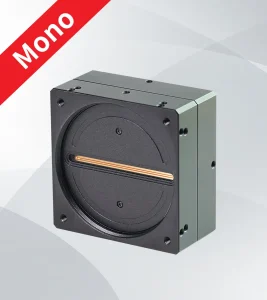Area Scan Camera Selection Criteria: When selecting an area scan camera that is the best fit for your needs, it requires consideration of several factors to achieve maximum performance and value. It all starts with whether you care about resolution in your camera. Cameras with higher resolution like 20 MP able to capture a more detail and accurate image than any other cameras. According to a 2024 report from Vision Systems Design, cameras with resolutions of ten megapixels or higher can be used in detailed inspections that yield up to fifty percent more clarity on an image-by-image basis compared against using lower lasrivote models similar (HS2apy)
The next issue to contemplate is the type of sensor and its size. The type of sensors inside an area scan cameras can be different; for example CCD or CMOS. For example, CMOS sensors are popular as they use less power and offer faster frame rates. Based on a survey conducted by Imaging Technology News 2024 the frame rates of CMOS sensors is up to 150 frames per second, while in CCD image sensor one can typically get only till 60fps. This can have a major influence on the performance of high-speed applications.
Yet another major factor is lens compatibility. The lens of the camera should be capable for recommended field-of-view and magnification corresponding to your automated inspection application. A telecentric lens is also essential in high precision measurement to avoid distortion, while a medium-range inspection requires the right focal length (which typically sits at 25mm – 50mm according to Industrial Camera Experts).
Check out the camera's interface and connectivitycapabilities Today, most area scan cameras can be ordered with a USB 3.0 or GigE interface According to the 2024 data from Vision Systems Design, USB 3.0 cameras comes with throughput up to a maximum of 5 Gbps which helps in quick and convenient image transfer and processing as well. For example, in applications where a greater reach is needed, GigE cameras are great options as they can transmit data up to 100 m over long distances.

Before buying any camera always go for the frame rate and shutter speed compatible with your application. Fast moving objects demand high frame rates One such example is seen in a 2024 article published on Automation World, which noted that cameras with at least 100 frames per second are needed in high-speed production settings (e.g. packaging or assembly lines) to prevent motion blur [3].
Some of the key factors that you should pay attention to are: Camera and how durable its built in or environmentalerialization features. First of all, you want to make sure the camera housing is robust and rated IP67 at least i.e. water / dust reliability in order devices held under long term construction work etc. A 2024 case study by the Industrial Vision Association showed that IP67 rated cameras recorded negligible failures in extreme manufacturing environments, resulting In up to 30% less downtime.
Evaluate Software Compatibility and Support Last The software it shipped with should be easy to use and built in conjunction with your current systems. The back-camera supports software capabilities like image processing and analysis tools which enhance the functioning of camera. For long-term value and adaptability, any 2024 review on Machine Vision Online will tell you that the cameras with plenty of software support and / or updates are preferred.
For those who want to know more about area scan cameras and their specifications, please visit the link mentioned here: Area Scan Camera.